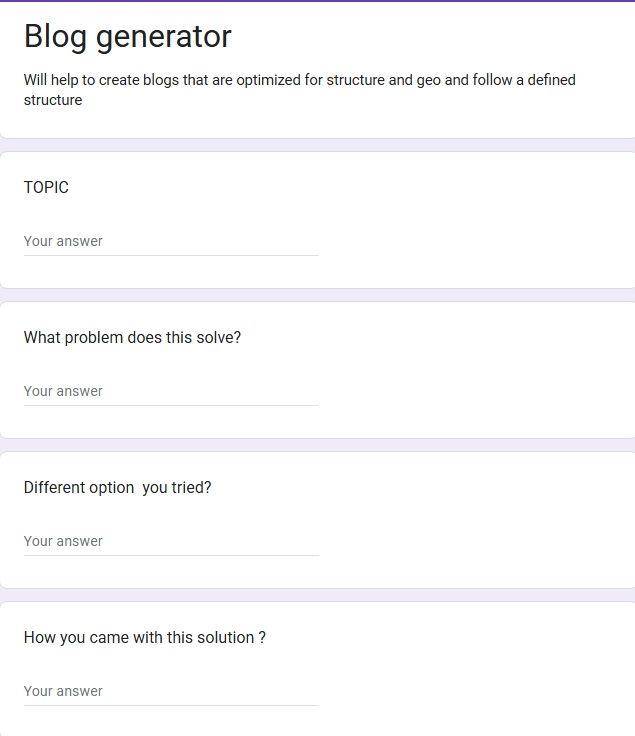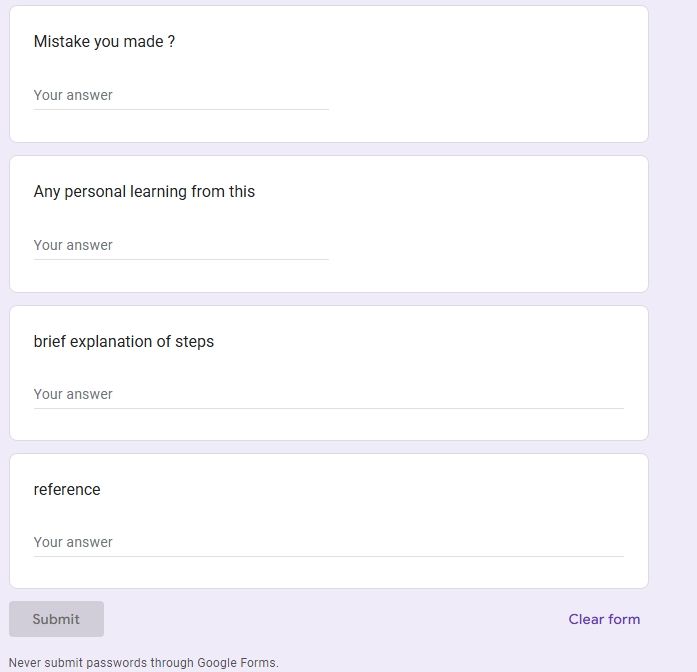📖 Description
🔹 How it works
This workflow turns a Google Form submission into a polished, SEO-optimized technical blog with a human approval step before publishing.
-
Google Form Submission (Trigger)
- The process begins when a Google Form is filled.
- Responses are stored in Google Sheets, which acts as the trigger for the workflow.
-
AI Blog Draft Generation
- Takes the form inputs (problem statement, options tried, solution, learnings, references, etc.).
- AI generates a structured draft JSON blog post containing:
- Title & metadata
- Problem explanation
- Solution breakdown
- Implementation methods with realistic code snippets
- Troubleshooting, performance tips, security notes, advanced use cases
- Clear developer-focused conclusion
-
Template Fitting
- Reformats the draft into a professional long-form blog structure with consistent headings (H1, H2, H3), code blocks, and clear formatting.
-
Optimization Layer
- Applies multi-layer optimization to make the blog:
- SEO-friendly (keywords, meta description, structured headings).
- GEO-ready (Generative Engine Optimization for visibility in ChatGPT, Claude, Gemini, etc.).
- Human-like in tone (reads naturally, avoids AI-detector flags).
- Applies multi-layer optimization to make the blog:
-
Human-in-the-Loop Review
- Sends the draft via Gmail (Send + Wait for Response) to an editor or approver.
- Approver options:
- ✅ Approve → Blog is stored & marked completed.
- ❌ Reject → Feedback is sent for revision.
- 🚫 Cancel → Workflow ends save status in sheets.
-
Publishing / Storage
- Approved blogs are stored in a separate Google Sheet for publication tracking.
- Status in the original sheet is updated to Completed.
⚙️ Set up steps
- Connect Google Sheets & Gmail in n8n.
- Link your Google Form to the trigger sheet.
- Add AI provider credentials (Groq, Mistral, or OpenRouter).
- Customize blog structure (problem, solution, code, references, etc.).
- Set reviewer email(s) in Gmail node.
- Test the workflow by submitting a sample Google Form response.
google form sample:

⚡ Result: A fully automated pipeline where filling a Google Form kicks off AI-powered blog generation, optimization, and a human-in-the-loop approval process, making technical content creation faster and more reliable.